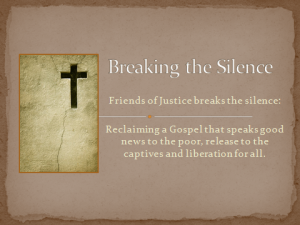 Breaking the Silence is a six-week study designed for existing Sunday school classes and study groups. The core conviction is simple: what was good news for Jesus should be good news for the church.
Breaking the Silence is a six-week study designed for existing Sunday school classes and study groups. The core conviction is simple: what was good news for Jesus should be good news for the church.
Although Breaking the Silence can be taught in any Christian setting, it is specifically designed with “messy middle” congregations in mind.
In America, messy middle congregations are found at the progressive end of the evangelical spectrum and in the churches of the Protestant mainline. As a rule, these churches are no longer inspired by the old-time gospel of revivalism, but they aren’t sure what to put in its place. There is little consensus within messy middle congregations about the content of the Christian gospel or how our shared faith should impact public policy. We don’t want to sound like religious fanatics and, since our congregations reflect the full range of political opinion, we avoid ideological conflict.
America is in the early phase of a cultural revolution that will gradually push organized religion to the margins of social life. Churches that once enjoyed a seat at the table are losing their influence in an increasingly multicultural and “postmodern” society. This trend is particularly evident among Millennials, a generation that is far less enamored of organized religion than were their parents and grandparents. The brand of Christianity young people know best (the kind they see on television and on Facebook) is widely derided as narrow, intolerant and judgmental.
Here’s the problem: the old time religion no longer resonates but messy middle churches have nothing concrete to offer in its place.
Breaking the Silence is not a market-friendly version Christianity-lite tailored to the tastes of postmodern America; the study simply asks what Jesus meant when he preached the gospel or “good news”. What was good news for Jesus, the study suggests, should be good news for the people who follow Jesus.
Breaking the Silence focuses on the places where responsible students of the Bible agree about the mission and message of Jesus. Breaking the Silence packages these often-revolutionary ideas to busy Christians who lack the time for theological study. The focus throughout is practical and missional.
Breaking the Silence is organized around the text Jesus selected for the synagogue in his hometown of Nazareth, Isaiah 61:1-3: “The Spirit of the Lord is upon me because he has anointed me to preach good news to the poor.”
COURSE OUTLINE
Lesson One: Who was Jesus? Who is Jesus?
Central Idea: As the climax of the story of Israel, Jesus inaugurated the reign or kingdom of God.
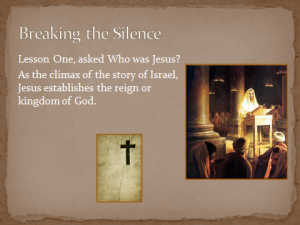
Lesson Two: Good News to the Poor
Central Idea: The gospel of the kingdom is good news to the poor and bad news to oppressors.

Lesson Three: The Walls Come Down
Central Idea: Because the kingdom of God abolishes us-them categories, Jesus-followers have no enemies and refuse to be treated as enemies.
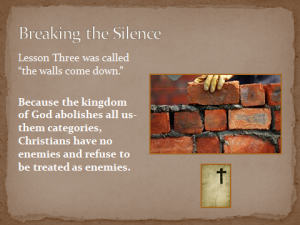
Lesson Four: Cross and Kingdom
Central Idea: Jesus conquered death by remaining true to the kingdom values he proclaimed. We take up our crosses as, with Jesus, we stand in solidarity with the poor and demolish the walls that divide the human family.
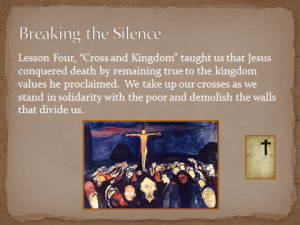
Lesson Five: God and Caesar
Central idea: God ordains public officials as guardians of the common good and expects the church to hold them accountable.
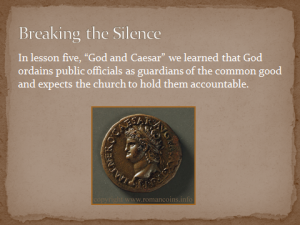
Lesson Six: Homelessness in biblical perspective
Central Idea: Because homelessness is inconsistent with the kingdom values of Jesus, the church must work to end it.
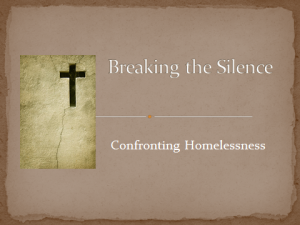
Dr. Alan Bean, Executive Director of Friends of Justice, is currently writing a book that will present the message of Breaking the Silence in the context of his justice work. When available, the book will greatly expand the reach of the program. If you would like to bring Breaking the Silence to your church or small group please contact Dr. Bean.
